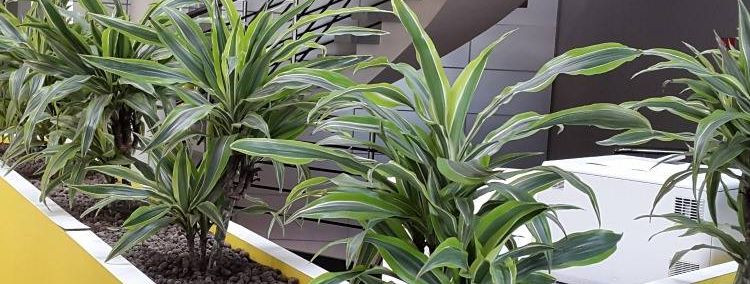The benefits of indoor landscaping in the workplace
Indoor landscaping, also known as interior landscaping and plantscaping, involves the design, arrangement, and maintenance of plants and natural elements within indoor environments. It's a practice that not only beautifies spaces but also contributes to the health and well-being of individuals who occupy them.
In today's fast-paced and often digital-centric work environments, bringing elements of nature indoors can create a much-needed bridge to the natural world. Indoor landscaping in the workplace is becoming an essential component of modern office design, reflecting a company's commitment to sustainability and employee well-being.
Psychological Benefits
Studies have shown that the presence of plants in the workplace can significantly reduce stress levels. Greenery provides a sense of calm and can help employees feel more relaxed, leading to a more harmonious work environment.
By incorporating natural elements into the workspace, employees often experience a boost in creativity and productivity. Plants can inspire and invigorate, leading to improved performance and innovation.
The aesthetic appeal of plants can enhance the mood of employees, contributing to overall job satisfaction and a positive workplace culture.
Physical Health Advantages
Plants are natural air purifiers, removing toxins and improving air quality. This can lead to fewer health complaints and sick days among employees.
Strategically placed plants can act as sound barriers, reducing noise pollution in the office. This can be particularly beneficial in open-plan workspaces where noise can be a distraction.
Plants help regulate humidity levels, which is important for comfort and health. Proper humidity can prevent respiratory issues and improve skin health.
Economic and Business Benefits
Workplaces that offer a pleasant and healthy environment can help retain employees. Indoor landscaping can play a significant role in creating such an environment, reducing turnover and associated costs.
A well-designed indoor landscape can enhance a company's image, signaling to clients and visitors that the company cares about sustainability and the well-being of its employees.
Plants can contribute to energy efficiency by moderating indoor temperatures, leading to potential cost savings on heating and cooling.
Design and Aesthetic Appeal
Indoor plants can make a workplace more inviting and comfortable, which is beneficial not only for employees but also for visitors and clients.
Applying biophilic design principles, which incorporate natural elements into building design, can lead to more engaging and restorative workspaces.
Indoor landscaping can help define spaces and create visual interest, which can be used to reinforce a company's green branding efforts.
Considerations for Implementing Indoor Landscaping
Selecting the right plants for the office environment is crucial. Factors such as light levels, space, and the potential for allergens should be considered.
Regular maintenance is essential to ensure that plants remain healthy and attractive. This includes watering, pruning, and monitoring for pests.
Modern indoor landscaping can include the integration of technology, such as automated watering systems and grow lights, to maintain plant health with minimal effort.






Comments (0)